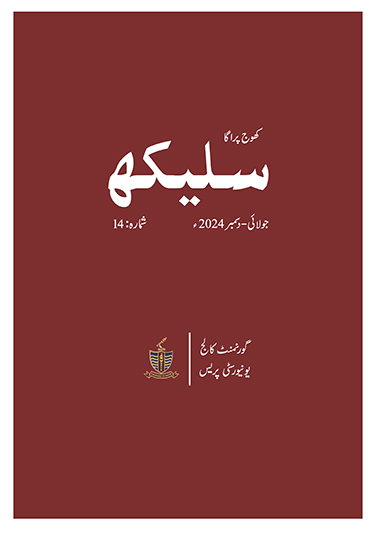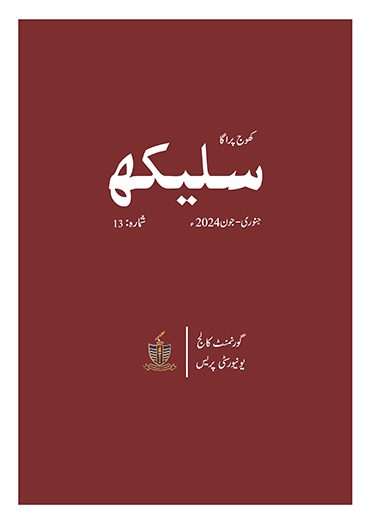|
شمارہ: 14
|
جولائی تا دسمبر 2024ء
|
کھوج پراگا
|





|
شمارہ: 13
|
جنوری تا جون 2024ء
|
کھوج پراگا
|





|
شمارہ: 12
|
جولائی تا دسمبر 2023ء
|
کھوج پراگا
|




The article not only introduces Faiz Ahmad Faiz as a Punjabi literary figure but also aims
to highlight his
complete works with proper references. The foundation of the article is based on the
examination of Faiz's
Punjabi poetry, revealing his profound influence and distinctive perspective on resistance.
While some of
his verses are popularly known, this article endeavors to bring forth the entirety of his
Punjabi poetic
expression, allowing readers to appreciate it within the broader tradition of Punjabi
literature.
Read Article


|
شمارہ: 11
|
جنوری تا جون 2023ء
|
کھوج پراگا
|






|
شمارہ: 10
|
جولائی تا دسمبر 2022ء
|
کھوج پراگا
|
|
|
شمارہ: 9
|
جنوری تا جون 2022ء
|
کھوج پراگا
|
|
|
شمارہ: 8
|
جولائی تا دسمبر 2021ء
|
کھوج پراگا
|
|
|
شمارہ: 7
|
جنوری تا جون 2021ء
|
کھوج پراگا
|
|
|
شمارہ: 6
|
جولائی تا دسمبر 2020ء
|
کھوج پراگا
|
|
|
شمارہ: 5
|
جنوری تا جون 2020ء
|
کھوج پراگا
|
|
|
شمارہ: 4
|
جولائی تا دسمبر 2019ء
|
کھوج پراگا
|
|
|
شمارہ: 3
|
جنوری تا جون 2019ء
|
کھوج پراگا
|
|
|
شمارہ: 2
|
جولائی تا دسمبر 2018ء
|
کھوج پراگا
|
|
|
شمارہ: 1
|
جنوری تا جون 2018ء
|
کھوج پراگا
|